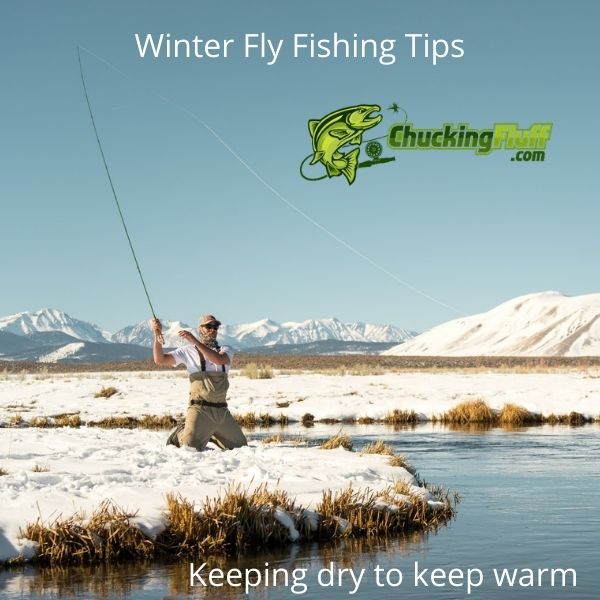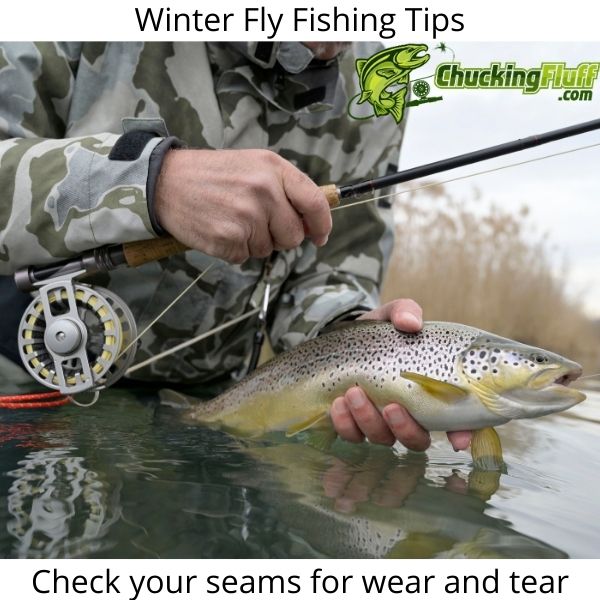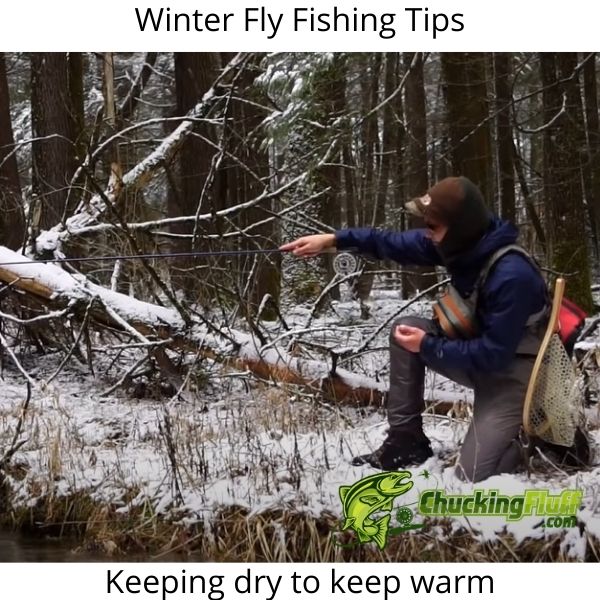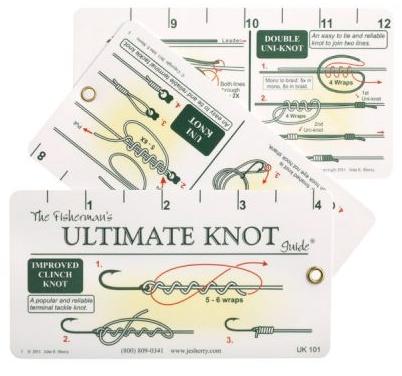| Disclosure: Just to be open and honest the buttons and links you click on in the website will in most cases take you to another website where you can purchase the products I am reviewing. As an Amazon Associate I earn from qualifying purchases. |
How to Keep Dry in Winter while Fly Fishing
Aspects of Mother Nature are beautiful in their forms. Humans will however complain when some changes are a little extreme. Since the evolution of fly fishing clothing, gear, and apparel, most anglers are beginning to enjoy the weather extremities even more.
Winter and the rains that come with it are one of those forms of nature that can quickly escalate from mild to severe with a snap of a finger. As winter fly fishers, we move regardless.
Winter comes with so many calm periods. Some are a bit cloudy without wind and others are rainy with a little sun-it is a mix of almost anything you don’t expect. However, this makes one of the best times to fish.
There are those wet days when the heavens are generous and the wind is enough to help with casting. This is bearable and not a hindrance when you are wearing the correct clothing.
On some days, the downpours are heavier and the gusts above average but everything settles as fast as it came up so gear up and enjoy the peace that comes every now and again.

Photo by Jeremy Bishop on Unsplash
Quick Post Navigation
- How to Keep Dry in Winter while Fly Fishing
- Dangers of Exposure to Cold Water when Fishing in Winter
- Tips for Staying Dry when Fly Fishing in Winter
- Oh Hail the Rain Jacket
- We go extra on the Packing List
- Breathe Buddy! Breathe!
- Excess Warmth can be Disastrous
- Check out for Burst or Open Seams
- Check for Open Pockets and Damaged Zippers
- Use your Drawstrings they aren’t Decoration Items
- Cuffs – Not for Fashion, Just Function
- Your Gravel Guards Might Not Guard you fully
- The Fit
- The ABC Rule
- Treat your Kits
- Completely Dry your Gear
- Be Watchful of the Tides
- Tactful Catching and Releasing of Fish
- Build a Fire- It is never that Serious
- Try and Watch Paths
- Watch the Weather Forecast, It isn’t Old-fashioned
- More Pointers to Avoid Wader Leakages
- Conclusion on How to Keep Dry in Winter while Fly Fishing
How to Keep Dry in Winter while Fly Fishing
Despite the dynamic conditions in winter, fish will still remain in the water. Most if not all the times, these chaps are catchable. In the episodes of inclement weather, you still need to have fun by getting over coiling on a couch.
Of course, winters are for cuddles, hot chocolate, pumpkin soup, a good brew of espresso, comforters, and every other good and cozy thing. Most people prefer to remain indoors because freezing and squelching aren’t uncommon.
Whether you will be hiking, trekking, climbing, or fishing, nobody enjoys being cold and damp. Besides being very uncomfortable or a potential step to ruining what seemed like a good day, this is very dangerous and could be detrimental if you suffer from chronic cold-related illnesses.
When the body temperature drops from exposure to cold water, it becomes daunting to get warm especially if unprepared. Preparedness on the other hand will set you up for a perfect adventure regardless of the weather.
Dangers of Exposure to Cold Water when Fishing in Winter
Fishing in winter can be famine or feast. Survival time quickly dwindles for individuals who are extremely wet and especially when temperatures are less than 70 degrees. Usually, cold water will drain your body’s heat 25 times quicker than colder air.
Immediately cold water gets into contact with the skin, cold shock results in an instant loss of your breathing control. Such occurrences increase your risk of drowning suddenly even in calm waters. The danger becomes greater in rough water.
About 10 minutes after you lose control of breathing, you regain awareness and the body has almost 10 minutes of reasonable movement.
Coldwater temperatures that will still below make the victim have no control over their hands and legs. This is the point where you are unable to swim.
If the series continues, you have up to 1 hour for hypothermia to set in. Hypothermia is when your body loses more heat quicker than it can generate it. Some of its symptoms are unconsciousness, violent shivering, and cardiac arrest.
However, you must remember that most of the cold water deaths happen before Hypothermia sets in. Ensure that you are wearing a life-jacket to allow for easier and faster identification. It is easy to get rescued when in one.
Frost nips aren’t frostbites. Frost nips occur when a part of the body is colder and blood flow is slower because of high heat dissipation. You can identify these areas because they are unnaturally pale because of minimal to zero blood movement.
This could happen because of exposure to colder waters. Some of the high-risk parts are the fingers, cheeks, ears, and nose. Quickly dry and warm up the affected areas once you spot them. AVOID RUBBING!!! Doing this damages delicate cells.
- Frostbites on the other hand are very serious. Body cells are damaged by ice crystals that form inside them. You can recover superficial frostbites but this will be severely painful.
- Deep frostbites could lead to losing your toes, fingers, and parts of the limbs. A frostnip should be a warning for impending frostbite. Extremely cold water could get this dangerous.
- If you suffer from cold-related allergies and illnesses, you should be very keen on how you handle yourself and your gear when out fly fishing in winter.
- Exposure to cold water can have very drastic impacts on your life if you assume the littlest of things.
- Overall, regardless of your health situation, ensure that you are watchful enough to ensure that you are completely dry.
Tips for Staying Dry when Fly Fishing in Winter
Oh Hail the Rain Jacket
First, not all rain jackets are the same. Your industrial design might not be functional for fishing escapades. Wearing a good quality wading jacket or rain jacket will create a bigger difference when out.
Most of them are designed from a waterproof yet breathable material which will allow vapor and sweat from your body to escape out but hinders moisture from outside from getting in. also, having an extra one stashed in your backpack or car will be a good rescue strategy in case you get submerged for long and are wet.
We go extra on the Packing List
You can’t be always careful not to get backsplashes or spill-splashes as you fish. Sometimes, wet wading can get you a little wet unpreparedly.
If this bothers you, always pack extra layers in your truck or backpack just in case you are in such a scenario and need to toast faster.
Carry some extra dry good-quality mid-layers. Even when having your wading jacket on, getting damp from the rain is common. When the heavens are remorseful or it is time to grab a beer for lunch, you can ditch your damp layers and feel dryer and warmer.
This creates a big difference in your comfort levels. Do this for other layers like socks, hats, beanies, and underwader pants.
Breathe Buddy! Breathe!
You literally are breathing if you are reading this. Well, what we mean here is that breathable layers sound so obvious but they play a very crucial role in keeping you dry and warm.
As you go about your fishing sessions, cold air can find its way into your body surface. When the cold air gets into contact with body heat, condensation occurs inside your jackets.
This is how you get wet even if your perspiration levels are very low. To counter such cases, have breathable underneath layers and softshell jackets to wick away moisture faster and leave you dry.
Excess Warmth can be Disastrous
Yes! You read it right. You don’t need to get too hot. As you move, your body generates more heat. The contrary happens when you are immobile.
It is good to warm up but you need to open the zippers on the side panels or vents or reduce a layer to keep a consistent temperature for comfort.
Check out for Burst or Open Seams
Fly fishing clothing and gear aren’t meant to be very snug and tight-fitting. The rule is to get something comfortable that will not restrict the flow of blood.
Sometimes, it is difficult to notice open or burst seams until you experience a leakage. Ensure that you check out for such issues as they are common but redeemable.
You can get your open seams repaired at the gear store or send it back to the manufacturer in case it is a defect in workmanship. Even if it isn’t, most brands accept to make repairs at a small fee.
Some anglers use seam tapes or glue to remedy the issue when they discover it on short notice. This might work but it isn’t guaranteed or long-lasting either.
Also, prolonged usage of the glues could damage your garments further.

Check for Open Pockets and Damaged Zippers
Looks that in this article, you will read the obvious and think that we must have been wasting time. Fortunately, we had to remind you of some of the simplest things that you often forget.
Zippers are prone to bursting, gaping, or failing on the user. If it isn’t properly functional or repaired, don’t carry it out to the waters if you expect to remain dry.
This is like putting an open bottle under a running tap-the damn thing will get filled. This is the same way you will be drenched if you dare this.
Ensure that all pockets can be closed either via working zippers or flaps. Test all your zippers for functionality before stepping out.
Use your Drawstrings they aren’t Decoration Items
All pieces on a fly fishing garment have their functions. Drawstrings are some of the most assumed things by anglers. Most wading jackets come with drawstrings at the hem.
You need this to keep the jacket snug in the waist area. This locks out water and keeps you and your items dry.
Cuffs – Not for Fashion, Just Function
Whether Dolphin Skin or Velcro, cuffs add style and aesthetics to a garment. Here, we need none of this. It is time to ensure that the cuffs can do what they have to do.
If they can’t, dump it in the trash or use it for summer fishing. Neoprene cuffs have Velcro to act as a barrier to prevent the entry of water inside the jacket.
If it fits perfectly in the wrist area you can be sure to remain dry. No water will run up the sleeve.
Your Gravel Guards Might Not Guard you fully
Yes, they are meant to lock out any sand, stones, gravel, and other particles to prevent damaging your waders. Faulty ones will be a potential way of getting yourself wet especially in the area where they meet the booties. Keep your high dollar items remain dry.
The Fit
We cannot stop emphasizing that the correct fit of all your fishing gear is crucial for comfort, flexibility, warmth, and dryness. Correctly position and tighten the braces when wearing waders. If your waders come with a wading belt, wear it.
Try different positions like kneeling on both knees, kneeling on one knee, squatting, crouching, sit down in them, step up on a chair, and all those movements that you would make when fishing. You will be checking for comfort.
Waders that pull tight when trying any of these positions will not be ideal as you will be straining the seams and be at high risk of bursting them. The belt will help in supporting the waders to avoid such strains.
NOTE:
Avoid standing on the waders when changing. It results in pinhole leaks at the rear side of the knee or thigh. These are areas that you wouldn’t expect any problems when using your waders normally.
The proper and safest way is to sit on the car seat or tailgate in a sideways manner then put them on. If you find this difficult, you could lean against a big tree to support yourself instead of standing on your waders.
As you wear or remove your waders, never should you have your neoprene socks in contact with the ground. This is a possible way to cause leaks in the foot area.
The ABC Rule
As usual, for winter fly fishing Anything But Cotton will probably work. Cotton garments soak up real fast because of their high absorbency rates. You don’t need to have them nearer during such times.
Otherwise, once cotton underneath garments get soaked from leakages, perspirations, or condensations, you automatically freeze. Keep them for summer!
Treat your Kits
The same way you treat a mild or scatter headache to prevent a migraine or throbbing one, you do the same to your waterproof gear. Most waterproof waders, jackets, packs, and boxes are finished with a water repellent coating.
This is one of the keys to them remaining dry. Over time and prolonged usage, the coating wears out. You need to treat these waterproof gear regularly to maintain their optimum performance even when the temperatures are at a single digit.
Completely Dry your Gear
A fisherman or woman is a ‘big fish’. This means that you will hardly go home without having wet gear. If you do, you most likely didn’t have as much fun with the aqua buddies.
You could thump your chest that your collection of fly boxes, packs, base layers, and outer layers are all waterproof but you never know. There could be open seams, or broken corners to allow in water.
Overall, it is pretty difficult to avoid wet gear during and after fly fishing. The solution is to air dry all your gear and clothing until completely dry to avoid wetting yourself on your next adventure.
Be Watchful of the Tides
Tides are at their highest during storms. You will notice that more rainwater will build up onshore. It is advisable to fish in areas with water movement. This could be at spillways, inlets, or near drains.
Besides the outflow churning up the bait, fish are in plenty waiting to feed and your chances of being swept by tides are zero.
Tactful Catching and Releasing of Fish
While we need waders that can hold up, our hands are holding almost everything we need to bring the new friend closer. You need to keep your hands dry and this mightn’t be as easy as you think.
Catching and releasing brownies, rainbows, and brookies will pose a steeper challenge. You can have your neoprene gloves on but this isn’t a thing most anglers will do. Most blame it on low dexterity and sensitivity.
If you must take off your gloves to catch or release trout, have a dry hand towel closer in your wading jacket. Release that guy to live again and wipe your hands dry.
Build a Fire- It is never that Serious
Building fires on the fly can help you dry your gear in case you did not pack extra to change into when you get soggy. As part of other essentials that you need to pack when going out in winter is a lighter and fire-starting material.
Stash them in your wading jacket, backpack, or car. You or your buddy could take a dunk and aren’t closer to your truck or car. Starting a small streamside fire could save your lives. As it helps you dry up, you will be warming up too.
Try and Watch Paths
You could have been warm and dry in your new pair of Gore-Tex or neoprene waders and jacket and looking forward to having a blast in your life for the next few hours.
The devil is never happy with such enthusiasm and that is where the sharpest thorn finds its way into your new addition and damages it. There is more damage in waiting in case you are unaware of what happened.
Torn outerwear is a direct pass to sogginess if you get submerged in water, experience backsplashes, or it starts raining. Ensure that you are watchful of your paths when moving in areas with thick greenery or shrubs and thickets.

Watch the Weather Forecast, It isn’t Old-fashioned
Most people assume that watching weather forecasts is old-school. For any angler, this is one of the vital determinants of going out to fish. In some countries, Stillwater fishing is best enjoyed and safer at low pressure.
The fish here will be feeding in rainy or damp weather. A winter angler can step out and have the best of time.
Sunny winters invigorate the rivers, creeks, and lakes towards the margins. Insect activity is plentiful and the fish are feeding in numbers. Stormy weather will be a not-dare time.
If you will be fishing at this time, the chances of getting wet are higher than when there are light showers to medium rainfall.
Also as you go out in the storm to fish from the shore, remember that carbon rods are good conductors of electricity. Standing near or in water with such rods in electrical storms will be like signing your death certificate.
More Pointers to Avoid Wader Leakages
User problems are the commonest. Avoid sitting on thorny or rough grounds. The thorns, sharp sticks, and stones could puncture your waders.
Exposing your breathable fly fishing garments to spiky or sharp objects is a direct pass to damaging them. Carry a sitting mat to use as surface protection.
Be careful when handling your flies and hooks. Sometimes, you could hit yourself with those big salmon doubles and this could tear your waders.
How do you store your waders, boots, and other breathables? Most fly fishing garments don’t like being creased or tightly folded. This could cause long thin leaks along the calf or shin areas.
If possible hang them in the closet or garage and grab an intact one when you need to go out. Also, storing them in areas with mice and rats is disastrous. The damage could quickly escalate from a small bite to a totally-messed fabric.
Stop hanging bootfoots by their braces. This stretches the braces and exerts a lot of pressure for a prolonged time in the seam areas that are between the fabric and the boot.
Conclusion on How to Keep Dry in Winter while Fly Fishing
Here, we like to insist on the obvious as safety comes before the fun. While winter fishing is one of the best times for trout anglers to step out, unpreparedness could take your life.
We have put together crucial pointers to staying dry and the impacts of exposure to cold water. We’d love you to stay alive so you can fish more!
If you are really not sure about fly fishing in winter because of the risks of getting wet and the impacts, you can wait for when the season is just setting in or almost welcoming the next because the temperatures are usually favorable at these times.
Avoid fishing in the winter peaks if you are still skeptical. But if you have to, put in all the advice and precautionary measures.
The secret to staying warm in winter is staying dry!



Hello. Great article and good information for those who go out in the winter fly fishing. I live in the desert and we have two seasons. Summer and Winter. Our winter only gets down to the 30’s as the low so we do not have to worry too much about that. I also heard that we loose most of our heat from our heads! I would think keeping your head covered, warm and dry with hydration of course would be recommended.
Yes John keeping our heads covered is important when out in sub-zero temperatures. Our article on winter fly fishing apparel gives a good description of types of headgear that can help with that.
Hello. Great article and good information for those who go out in the winter fly fishing. I live in the desert and we have two seasons. Summer and Winter. Our winter only gets down to the 30’s as the low so we do not have to worry too much about that. I also heard that we loose most of our heat from our heads! I would think keeping your head covered, warm and dry with hydration of course would be recommended.
We do lose most of our heat through our heads and some of us who have thinned out a bit lose it a lot quicker. It’s indeed necessary to wear a decent thermal hat to keep that heat in. You will feel so much better for it. Usually, on the open water, there is a wind of some kind and that blowing on an uncovered head can be really chilly.
Not a bad tip for me to follow and I will make sure that this is one thing that I do to keep up with keeping dry. Ay a time when we are already in the winter season and the ice are flowing in, it’ll be good to keep dry when I want to go fly fishing and the tips you have given me here will help. I’ll use it for sure. Thank you!
Keeping dry will help in keeping you warm, getting wet will cause heat to be pulled away from the body making you feel colder than needed and in really cold conditions this can be dangerous to your health.